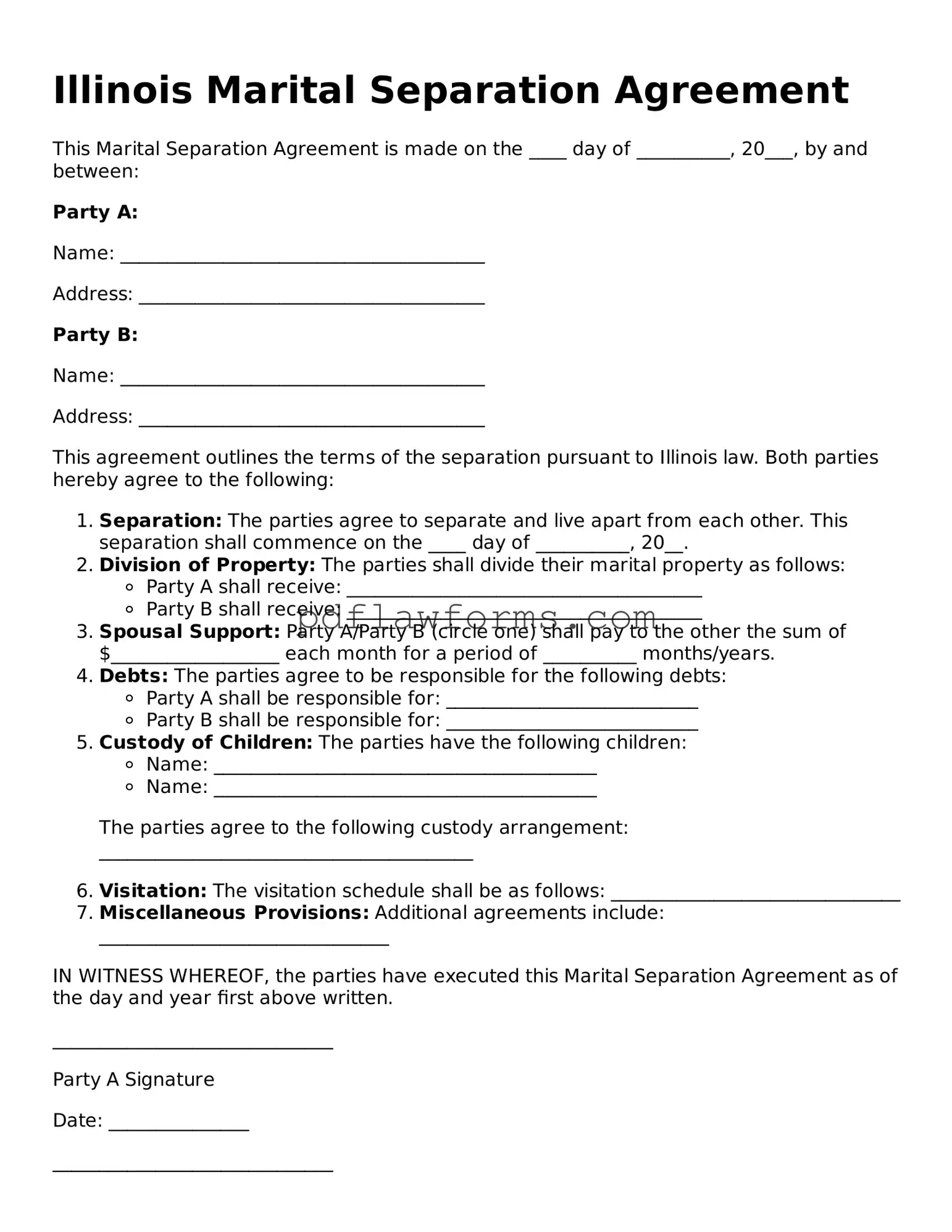Filling out the Illinois Marital Separation Agreement form can be a straightforward process, but many people make common mistakes that can lead to complications down the road. One frequent error is failing to include all necessary personal information. This includes full names, addresses, and dates of birth for both spouses. Omitting this information can delay the processing of the agreement.
Another mistake is not being specific about asset division. Couples often list general categories of property but fail to detail who gets what. This lack of clarity can lead to disputes later on. It's essential to itemize assets and specify their value to avoid misunderstandings.
People also sometimes overlook the importance of addressing debts in the agreement. Just as assets need to be divided, so do any outstanding debts. Ignoring this can result in one spouse being responsible for debts that should have been shared.
Additionally, some individuals forget to include provisions for child support and custody arrangements if children are involved. Clear terms regarding parenting time and financial support are crucial for the well-being of the children and can prevent future conflicts.
Another common error is not having the document notarized. A notarized agreement carries more weight in court and is often required for it to be considered valid. Skipping this step can undermine the enforceability of the agreement.
Many people also fail to read the entire form carefully before submitting it. Missing sections or not understanding the implications of certain clauses can lead to unintended consequences. Taking the time to review the document can save a lot of trouble later.
Some individuals neglect to discuss the agreement with their spouse beforehand. Open communication can help ensure both parties are on the same page, reducing the likelihood of disputes. A lack of discussion can lead to surprises that complicate the separation process.
It's also important to remember that any changes made after the initial submission should be documented properly. People often make informal agreements but fail to update the official form. Keeping records of any modifications is essential for clarity.
Lastly, some individuals underestimate the importance of legal advice. While it may seem unnecessary, consulting with a legal professional can help identify potential pitfalls and ensure that the agreement meets all legal requirements.
By being aware of these common mistakes, individuals can approach the Illinois Marital Separation Agreement form with confidence and clarity, paving the way for a smoother separation process.
